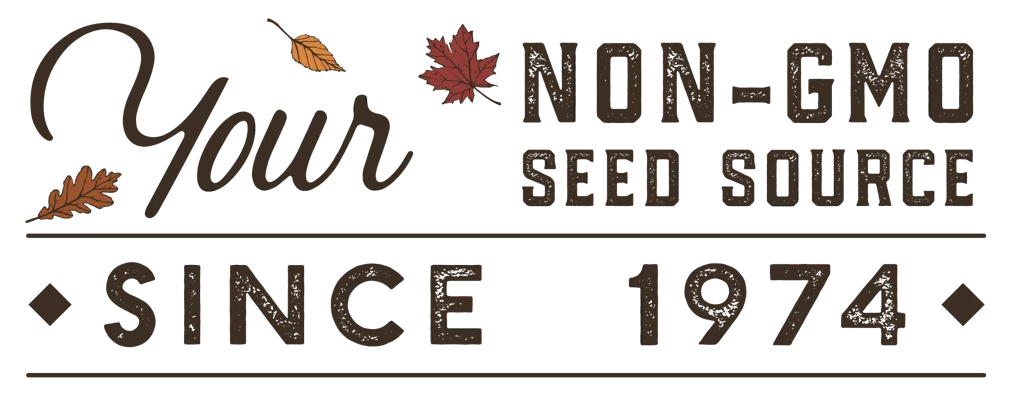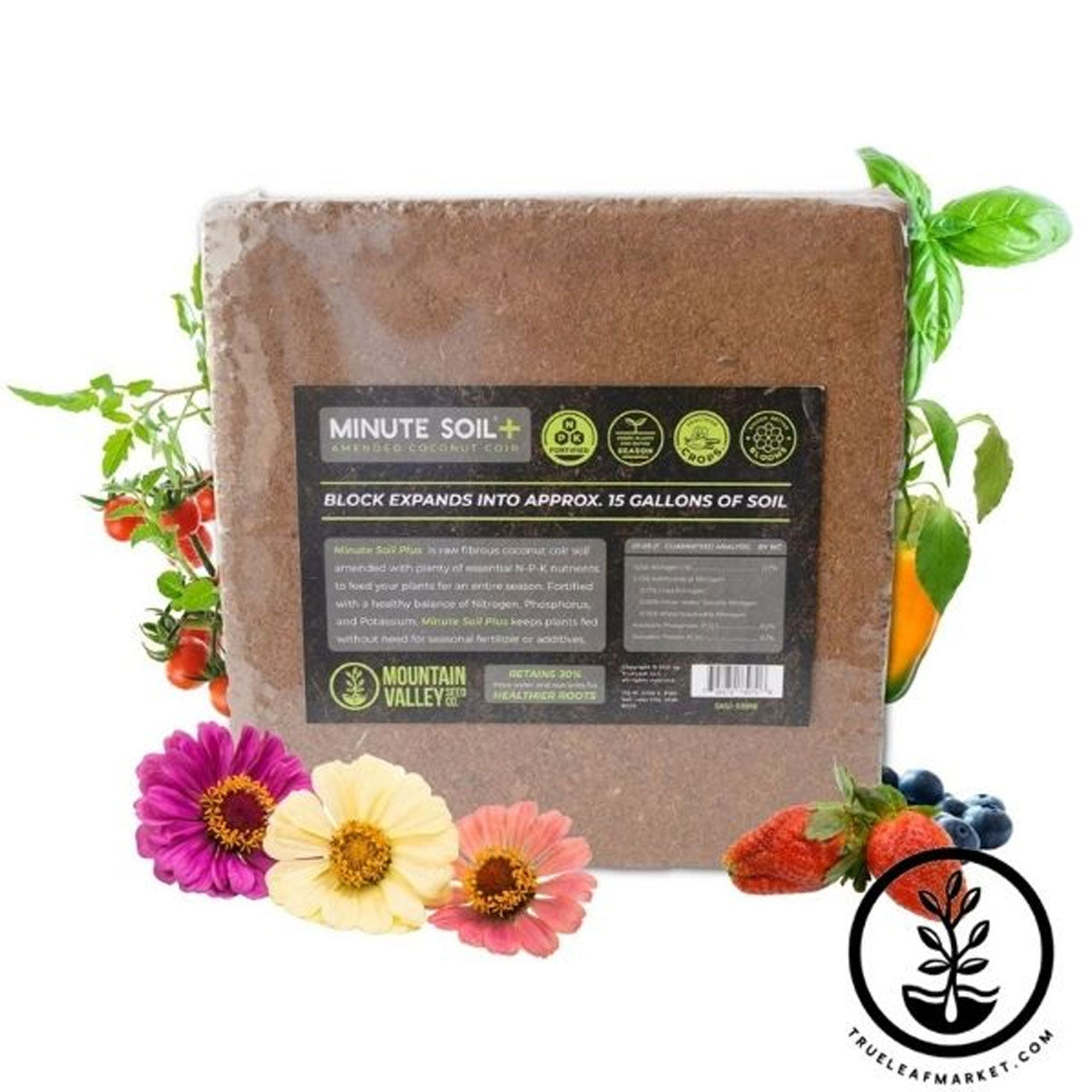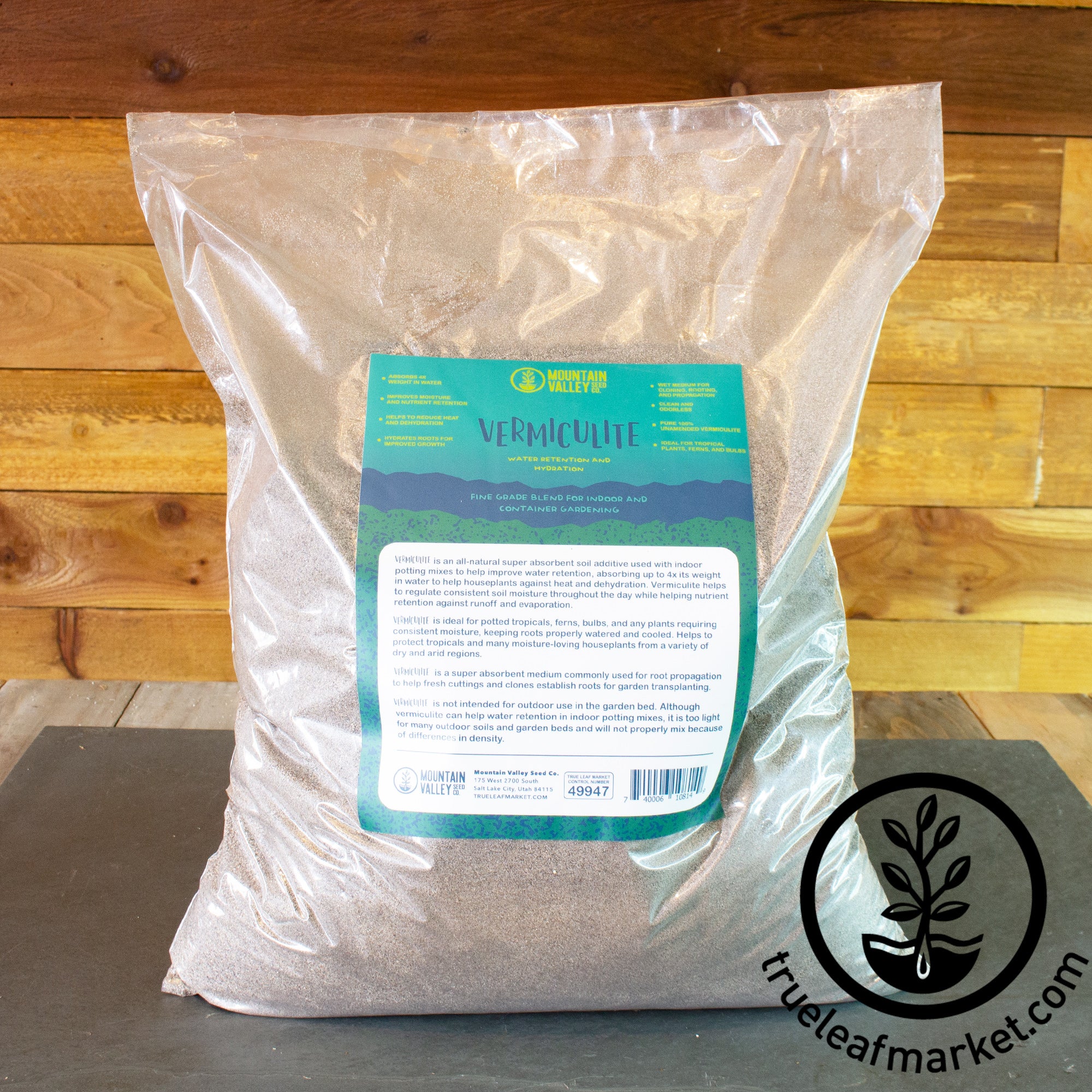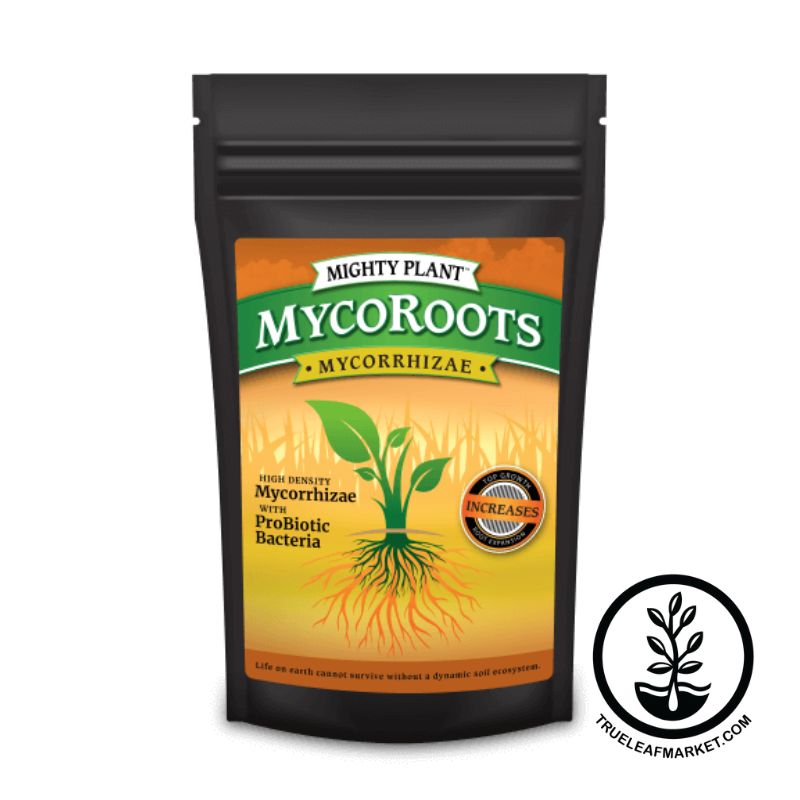 |
Written By Lara Wadsworth |
Whether you are a true gardening beginner or only just getting into soil science, amendments can be a daunting subject. Soil amendments are seemingly magical ingredients that can transform your soil, leading to healthier plants and more bountiful harvests. But with so many options out there, it can be overwhelming. Here, I have outlined the ten most common soil amendments, their purposes, and how to use them. Get ready for a boost to your confidence and also to your garden!
1. Compost
Compost is decomposed organic matter, often called "black gold" by gardeners. It’s rich in nutrients and beneficial microorganisms. Compost is easily one of the best things anyone can add to their soil. While the exact nutrient makeup of compost will vary depending on what it is made with, it is always beneficial for soil structure, texture, drainage, and fertility. I always recommend adding compost to your soil at least twice a year to maintain a high-quality growing medium.

Need better drainage? Compost. Need better water retention? Compost. Need better pH? Compost. Need more nutrients? Compost. The most cost-effective method is to make compost at home yourself, but compost can be purchased from garden centers where that might not be possible. Keep in mind that purchased compost might not have an active microorganism profile, but it is still great for the nutrient and organic matter aspects. To apply it to your garden, spread a 2-3 inch layer over your garden beds and mix it into the top 6-8 inches of soil. You can also use compost as a mulch around plants to slowly release nutrients over time.
2. Manure
Manure is animal waste that has been composted to kill harmful pathogens. Common types include cow, horse, and chicken manure. Manure is excellent because it adds organic matter back into the soil, provides a wide array of essential nutrients to plants, and improves the soil texture overall. Manure can often be sourced from local farms or stables. You can also buy bagged manure at garden centers, home improvement stores, or online.
To use it, work a few inches of well-aged manure into your soil before planting. While fresh manure can be used, it is best if it has been broken down a bit first. Be cautious with fresh manure, which can burn plants and introduce pathogens. Manure is an effective option if you need higher soil fertility or need to improve soil texture in some way.
3. Coconut Coir
You may have heard of peat moss as a soil amendment, which is very similar in use to coconut coir. Peat moss is partially decomposed sphagnum moss harvested from peat bogs. It is known to improve water retention, lighten heavy soil, and slightly increase the acidity of your soil, so it is often used. It is also widely available at garden centers, home improvement stores, and online retailers. However, it is not a sustainable option because peat moss is harvested from bogs that take thousands of years to create and is costly to ship.
Coconut coir is a much better alternative. It has all the same benefits as peat moss but is sustainably harvested and doesn’t alter the pH of your soil. Coconut coir is recommended for improving soil retention and lightening up heavy soils. It is inexpensive, easy to use, and is a much more sustainable option. It is a natural byproduct of the coconut industry and would otherwise be thrown away. Mix it into your soil at a ratio of 1 part coconut coir to 2 parts soil. If you need to increase the acidity of your soil as well, consider adding pine needles or compost.
4. Vermiculite
Vermiculite is another well-known soil amendment that can often be found in potting soil mixes. It is a mineral that expands when heated. It is lightweight and has excellent water-holding capacity. It is known for improving soil aeration, enhancing moisture retention, and preventing compaction. You can find vermiculite at garden centers, home improvement stores, or online. Incorporate vermiculite into your soil or potting mix at a ratio of about 1:3. This helps create a light, airy mix, perfect for seed starting and root development.
5. Perlite
Perlite is a volcanic glass that expands when heated, forming white, porous granules. It is adored in growing mediums for improving drainage, preventing compaction, and enhancing soil aeration. It helps water pass easily around plant roots for quick absorption. Mix perlite into your soil or potting mix at about 10-20% by volume. It’s particularly useful for succulent and cactus gardens that require excellent drainage. Perlite is easy to purchase from online stores, including us. Use it if you often have water pooling near your plants or if you routinely struggle with root rot.
6. Gypsum
Gypsum is an easy-to-find mineral that can be purchased anywhere they sell garden supplies. Gypsum is a mineral composed of hydrated calcium sulfate. It’s commonly used to improve clay soils and is a routine treatment for compacted agricultural soils. Gypsum can improve the structure of heavy clay soil and remove sodium from saline soils. It also has no effect on soil pH.
While gypsum has been proven to be very effective in various applications, it is probably overused in a residential setting. Before adding gypsum to your soil, complete a soil analysis to identify what your soil issues are and how (if) gypsum should be applied. In some situations, it can even cause nutrient leaching and result in more work for yourself later.
7. Bone and Blood Meal
Bone and blood meal are animal byproducts that can be used as fertilizers in nutrient-deficient soils. Bone meal is ground animal bones, a rich source of phosphorus and calcium. It promotes root growth, enhances fruit and flower production, and adds essential nutrients to the soil. Use about one tablespoon of bone meal per plant or 5 pounds per 100 square feet.
Blood meal is dried, powdered animal blood. It is known for being very rich in nitrogen. As a result, it promotes lots of leafy growth and can green up foliage that has begun to yellow due to nitrogen deficiencies. Apply blood meal sparingly – about 1 cup per 20 square feet. Too much can burn plants, so follow the recommended amounts closely. You can purchase it where garden supplies is sold.
8. Worm Castings
While compost is the poster child for adding organic matter into your soil and boosting nutrients, you want to be sure to purchase a high-quality product. Worm castings are a fantastic option that can be easily purchased online. Worms are Earth’s most efficient decomposers. They eat organic matter and poop out a rich substance that enhances the soil and boosts its nutrient profile. Mix it in liberally each spring before planting.
9. Sand
Do I need to explain what sand is? Okay, I will, just in case you are unfamiliar with the role it plays in soil. Sand is a coarse granular material that comes from finely divided rock and mineral particles. It is most often found at… the beach! However, we do not recommend stealing sand from the beach… that might even be a crime in some areas. You can purchase sand at home improvement stores or garden centers. Some local landscaping supply companies also sell sand in bulk for large projects. As a natural component of soil, sand plays an important role when it comes to soil texture.
Sand is mixed into soil to improve drainage, prevent compaction, and loosen heavy clay soils. Aim for a ratio of about 1 part sand to 2 parts soil. Be careful not to use too much sand, as it can lead to overly porous soil conditions. Start with a little and add more until you get to the texture you need. It is best to add sand in conjunction with a source of organic matter such as compost, manure, worm castings, or coconut coir.
10. Lime
Lime is ground limestone, available in two forms: calcitic (calcium carbonate) and dolomitic (calcium magnesium carbonate). Its most frequent use is to raise soil pH and reduce acidity. As a result, it increases nutrient availability and directly adds calcium and magnesium to the soil. Lime is widely available for purchase at many in-person and online garden stores. Test your soil pH before applying lime. If needed, apply 2-5 pounds per 100 square feet and mix it into the top 6 inches of soil. It’s best to do this in the fall so it has time to adjust the soil pH before spring planting.
Other Valuable Soil Amendments:
Companion Amending
Keep in mind that you can mix and match these amendments as needed for your soil! Add compost and lime or sand and worm castings, depending on what your soil needs and what is available to you. Soil amending is a continual process of testing, altering, and then maintaining. It might sound like a lot of work, but it is really only a 1-3 times a year thing, and the results in your garden will be undeniable! Check out our other soil blogs for more information on soil amending for specific purposes.
 |
Lara Wadsworth, True Leaf Market Writer |
I am a native of Southwestern Michigan, where I also reside, and I love all things plants! I got a Bachelor's Degree in Horticulture and found the first work-from-home job I could get. Now, I spend my days writing for TLM, playing with my dog, eating delicious food with my husband, and plotting my next landscape or gardening move. I believe everyone should get down and dirty in the soil now and then. Happy Gardening!


























2 comments
At this moment I am ready to do my breakfast, when having my
breakfast coming again to read further news.
casino en ligne
If some one wants expert view on the topic of blogging afterward i advise him/her to pay a visit this webpage, Keep up the good job.
casino en ligne
You are so awesome! I don’t believe I’ve read through something like this before.
So nice to find another person with a few original thoughts on this subject.
Seriously.. thanks for starting this up. This web site is one
thing that’s needed on the web, someone with a little originality!
casino en ligne
Asking questions are genuinely good thing if you are not
understanding anything totally, however this article
offers pleasant understanding even.
casino en ligne
Way cool! Some very valid points! I appreciate you penning this post and also the rest of the site is really good.
casino en ligne fiable
Hi i am kavin, its my first time to commenting anyplace, when i read this post i thought
i could also make comment due to this brilliant article.
meilleur casino en ligne
An outstanding share! I’ve just forwarded this onto a
co-worker who had been conducting a little homework on this.
And he in fact bought me breakfast simply because I stumbled upon it for him…
lol. So let me reword this…. Thanks for
the meal!! But yeah, thanks for spending the time
to talk about this topic here on your website.
casino en ligne
I just like the valuable information you supply for your articles.
I’ll bookmark your blog and check again here frequently.
I’m reasonably sure I will be informed plenty
of new stuff right here! Best of luck for the next!
meilleur casino en ligne
hello!,I really like your writing so so much! share we keep
in touch more approximately your article on AOL? I need an expert in this space to solve my problem.
May be that is you! Having a look ahead to look you.
casino en ligne fiable
What’s up to all, how is everything, I think every one is getting more from this web page, and
your views are nice in support of new visitors.
casino en ligne France
They probably have with manure is that you do not know where it came from and feed yards. The cattle are given hormones for growth and they are liking and a number of different minerals that are required for your soil. If you’re going to use manure be sure that you get it from someone who is organically growing their cattle. The other thing is that you must add AZIMITE to your soil so that you have a large spectrum of minerals so that you have a healthy plan and healthy food